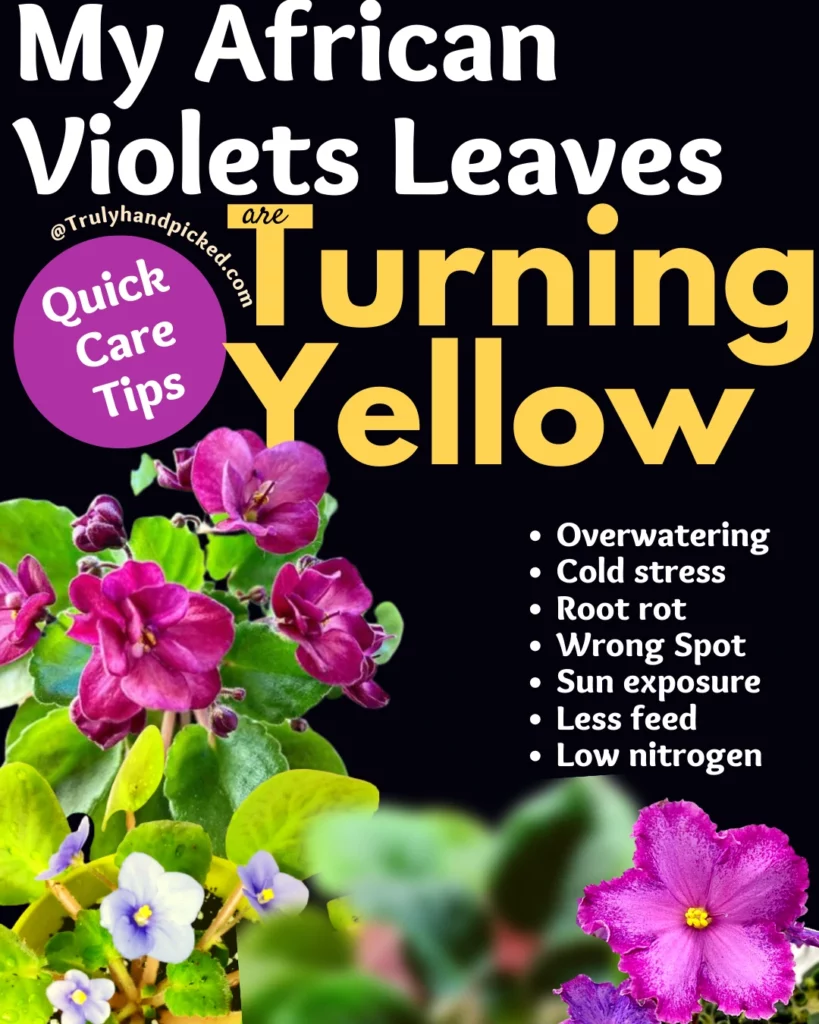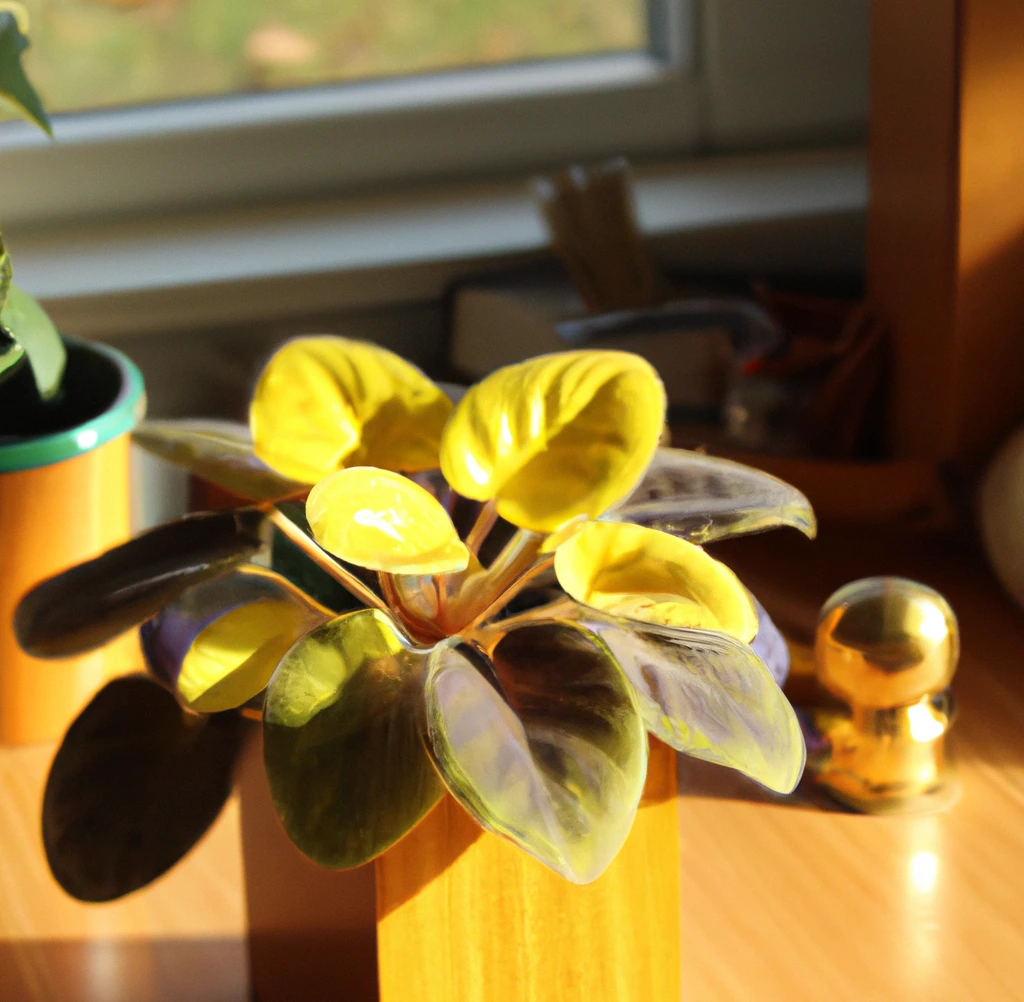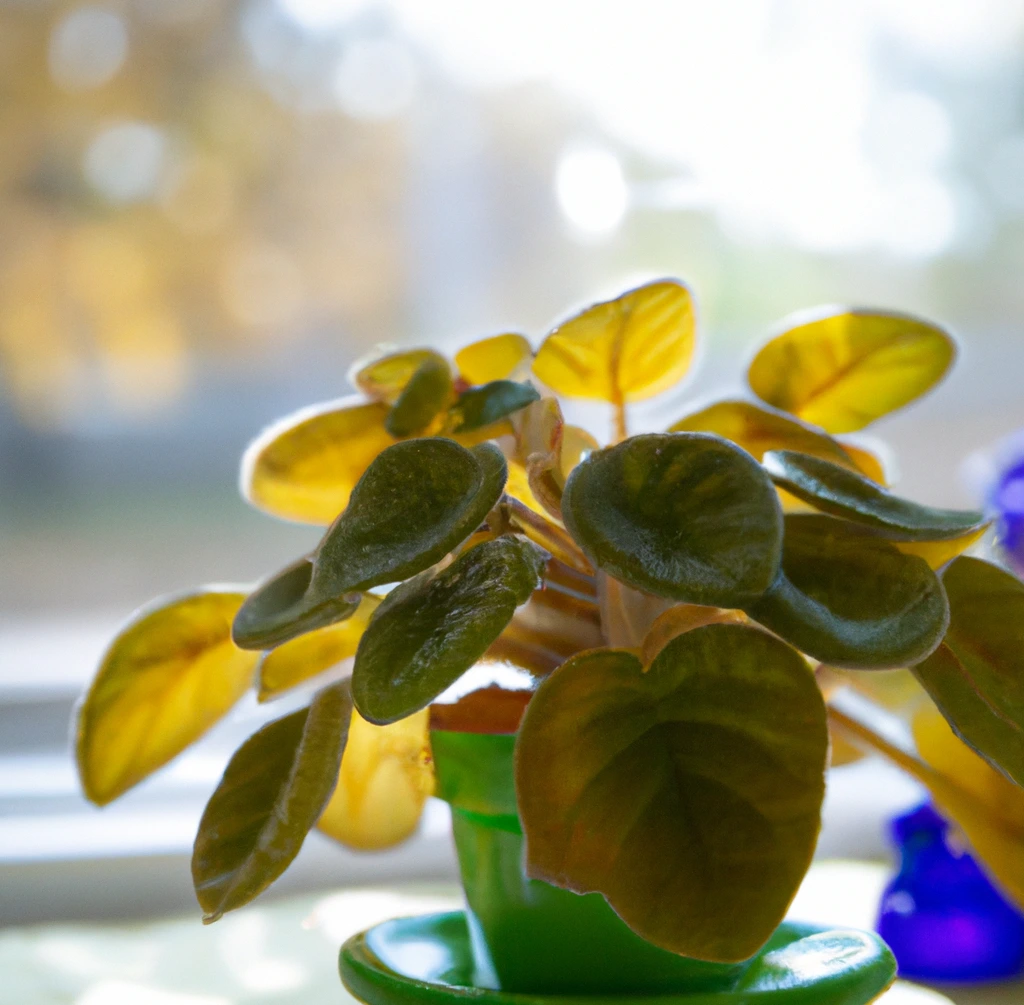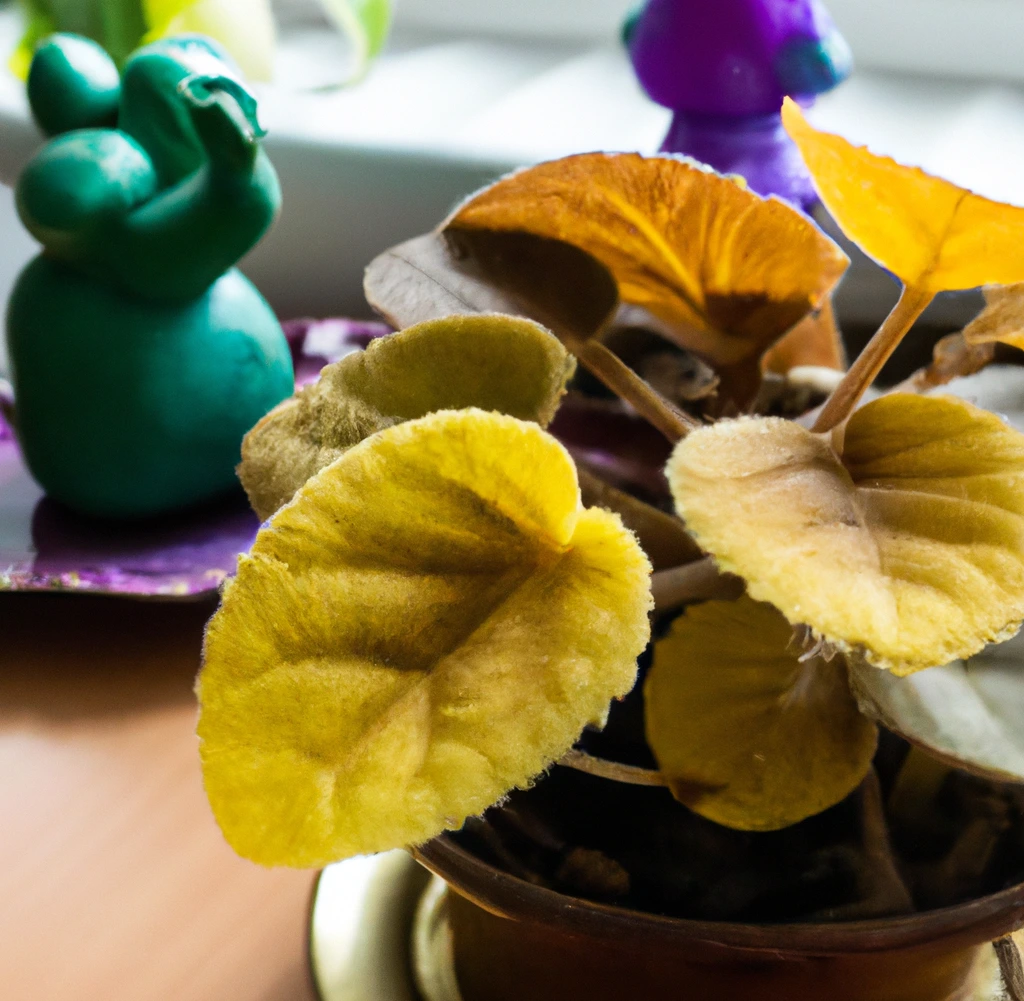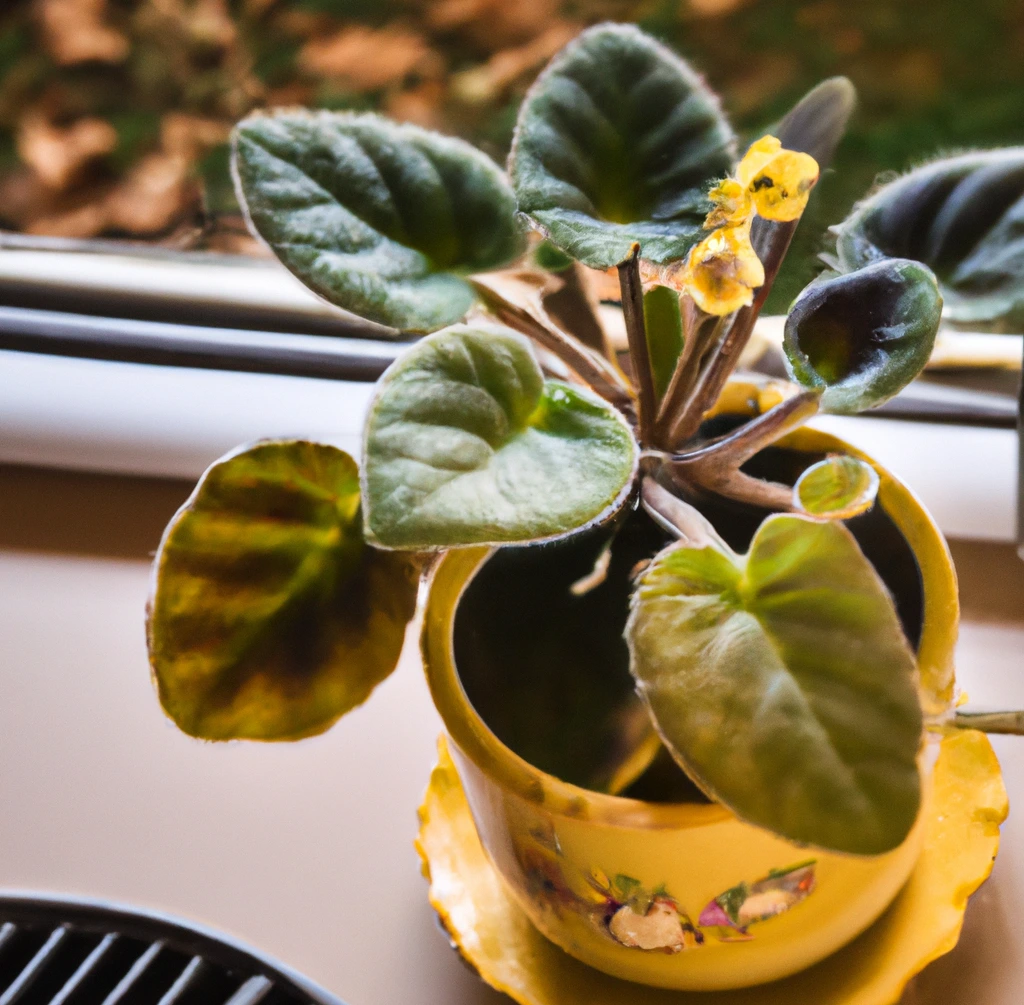African violets are gorgeous flowering plants. It grows deep purplish blossoms over thick, fuzzy emerald green foliage. The succulent-like leaves are one of the main attractions of this plant.
Jump to What You Want:
Reasons African Violet Leaves Turn Yellow | How Often to Water | African Violet Leaves Get Wet| Sunlight Needs | African Violets Bloom Season | FAQ | Wilting African Violets
1. Soil for African Violets – 2. DIY Soil Mixture – 3. Repotting African Violets – 4. Importance of Soil – 5. Soil Needs of African Violets
African violets are not very much needy species, but they have some special requirements to hold their health form eternally.
So, let’s check out what they are and how to deal with the problems that may appear due to some misconduct in their caring process-
Why African Violet Leaves Turn Yellow (Reasons & Fix)
Leaves of African violets sometimes lose their green tint and start turning yellow. This perennial plant is native to tropical African regions and thus, can’t stand direct sunlight.
Apart from direct sun rays, there are a few more reasons that exist to turn the foliage of this ornamental houseplant yellowish. Here are some commonest causes for turning the leaves of a growing African violets plant yellow-
Causes: Overwatering is the most common reason
- You must be drenching the leaves in the way of watering your plant
- The water you are using is colder or hotter than the room temperature
- You didn’t follow the bottom-watering process here
- Leaf cells of your plant may collapse due to overwatering
- Or your plant may suffer from drought stress due to underwatering for long
- Soggy soil results in root rot
How to Fix:
- Water your plant with the watering can that is specially designed to water under the leaves
- Always use water at normal room temperature
- Wipe the leaves with a dry cloth if you make them wet during watering
- Don’t let the plant suffer from overwatering or underwatering ever for long
Related: African Violets Not Blooming
Cold Stress & Wrong Spot :
Reasons
- Either it is in a completely shady area
- Your African violet is not getting enough light regularly
- Exposed to open drafts or windy windows
Solution:
- Put the planter in an east-facing window and keep it away a bit during noon
- Make sure that your plant can get at least 4 hours of bright sunlight daily
- Keep your plant safe from open drafts and windy seasons
- Try to place the planter in a spot where it can get bright but indirect sunlight consistently
Related: Complete Plant Care – African Violets Quick Tips
Direct Scorching Sunlight:
Reasons
- Keeping your African violets under direct sunlight for more than one week
- The leaves of your African violets may start getting scorched and sunburn
- Not enough shade is given to your plant from the afternoon sun
- Too much sunlight for more than 8 hours a day
How to Fix:
- Never place your African violet plant under direct sunlight ever
- Apply prevention before your plant starts getting sunburn signs
- Always provide shade or cover to your plant to keep it safe from afternoon sunlight
- Never let your plant get soaked under bright indirect sunlight for more than 8 hours a day
Improper Fertilization & Nutrient Deficiency:
Reasons
- You let your plant unfertilized for more than a month
- Or you don’t use the accurate diluted form of a plant food before applying
- You may be feeding your plant excessively like more than once a month
- The fertilizer you are using is extremely low in nitrogen content
How to Fix:
- Feed your plant once a month, especially during the peak season
- Never let your plant nutrient deficient for long
- Don’t overfertilize plant by applying full-strength fertilizer
- Drench the soil four times a year to reduce excess salt buildup from your plating soil
Related: Why Syngonium plant leaves are turning yellow
Unpruned Sessions:
Reasons
- Left without pruning your African violet plan for several months
- The older foliage of your plant doesn’t get shed for long
- New foliage cannot get enough space to emerge
- Congested and crowed will result in lesser light for a few plants reducing the photosynthesis process
Fix:
- Always remove three to four leaves from the bottom of your plant every month
- Do not let the old foliage touch the new shoots ever
- Shed the old leaves immediately once they start losing their healthy form ever
- Make sure the newly emerged leaves can get enough space to perform the photosynthesis process well
Try these tricks on your growing African violet plant and clutch the greenest form of your plant everlastingly.
Tutorial video > How to Prune African Violets.
Video: Wick Watering African Violets
Best Ways & How Often To Water African Violets?
In the way to keep the foliage healthy, you must know the right way to water an African violet plant. To water your growing African violet plants perfectly, follow these tips-

- Check the planting soil of your growing African violet plant
- Make sure it is not moist and almost dry about 1-2 inches of the top surface
- Never let the soil bone dry and keep it between moist and bone dry
- You can even buy a specific watering can that is specially designed for water under the leaves
- Always use water at room temperature to hydrate your African violet perfectly
- Once you pour enough water into the can, make the soil wet with 1-inch deep watering
- Make sure you use a well-drained potting mix and a pot with good drainage holes
- Check whether the excess water is draining from the bottom or not
- Wait for 6-8 days and repeat the process accordingly
Here we need to suggest you that prepare a planting soil with a balanced mixture to keep the draining quality of the growing medium always well.
Related: How often to water succulents
Make the ratio of potting mix about one part perlite, one part eats moss, one part vermiculite, and one part commercial potting mix to get the best draining experience.
Soil for African Violets
African violets, with their delicate petals and a rainbow of colors, are more than just eye-catching indoor plants. They’re living canvases that add a touch of elegance to any space.
Yet, beneath their enchanting blooms lies a crucial factor that often goes unnoticed but is absolutely essential for their health and vibrancy: the soil they call home.
DIY Soil Mixture for Your African Violets
- Crafting Your Own Mix: Imagine being your plant’s personal mixologist, tailoring every ingredient to perfection.
- Purchasing a Commercial Mix: Think of it as picking up a pre-made smoothie – convenient and designed with expertise. > Miracle Grow Potting Mix.
DIY Mix Recipe for African Violets:
- 1 part peat moss: It’s like a cozy blanket that holds moisture.
- 1 part perlite: Think of it as the aeration agent – roots get to breathe!
- 1 part vermiculite: This is your moisture manager – it holds water, but not too much.
- A sprinkle of lime: Add a pinch of seasoning to get the pH just right.
Mix these ingredients, and voila! You’ve got a custom blend that African violets will adore.
Crafting vs. Buying Soil Mix:
- Crafting Your Own Mix (Pros): It’s like tailoring – you control every element, ensuring a perfect fit for your violets. You can tweak components based on their preferences.
- Crafting Your Own Mix (Cons): It takes time and experimentation to find the right balance. Plus, sourcing ingredients might be a task.
- Buying a Commercial Mix (Pros): Convenience is the name of the game. These mixes are often formulated by experts and save you time.
- Buying a Commercial Mix (Cons): It might not be as personalized, and you’re limited by what’s available in the market.
Step-by-Step: Repotting African Violets with Care:
- Prep Your Tools: Think of it like a surgeon’s setup. Sterilize your pot, pruning shears, and any utensils you’ll use.
- Choose the Right Pot: It’s like finding the perfect apartment. Go for a pot that’s 1/3 the diameter of the plant, with drainage holes to avoid waterlogging.
- Prep the Soil: Get your custom mix ready (DIY or commercial). It’s like setting the table before a feast.
- Gently Remove the Plant: Think of it as unclipping a delicate necklace – handle with care. Loosen the plant by tapping the pot, then hold the plant’s base as you slide it out.
- Shake Off Excess Soil: Like a mini dust-off before a photoshoot. Be gentle – you don’t want to harm the roots.
- Trimming Time: Think of it as a spa day for your plant. Trim any damaged or overly long roots – a little off the top!
- Place in New Pot: Set your plant in the new pot, imagining it as a throne for your plant royalty. Fill around it with your soil mix.
- Pat and Water: Press the soil gently – it’s like tucking in your plant for a good night’s sleep. Water lightly to help settle the soil.
- Post-Repotting Care: Think of it like post-surgery recovery. Place the plant in a bright, indirect spot. Let it rest and adjust for a few days.
Tips for Gentle Repotting:
- Support the Leaves: Hold the plant by its base to avoid damaging the leaves.
- Gentle is Key: Imagine you’re holding a butterfly – be delicate when handling the plant.
- No Tugging: When removing the plant, don’t tug – it’s like detangling hair without pulling.
- Mind the Roots: Treat roots like delicate threads – don’t yank or break them.
Importance of Soil for African Violets
The Silent Support System:
- Soil is like a cozy blanket for African violets, cradling their roots and giving them a safe place to grow.
- It’s not just dirt; it’s a bustling world full of life that helps the plant stay strong.
A Balancing Act: Moisture and Drainage:
- Think of soil as a water manager. It holds just enough water for the plant to drink but not too much to drown.
- Too much water can make the roots sick, and too little can make the plant sad. Soil helps keep things just right.
Nutrient-Rich Abode:
- Imagine soil as a plant buffet. It gives African violets the food they need to grow big and bloom beautifully.
- Nitrogen, phosphorus, and other nutrients are like vitamins for the plant, and the soil serves them up.
Breathing Room: Aeration and Root Health:
- Air is important for plants’ roots, just like we need air to breathe. Soil lets air reach the roots, so they stay healthy.
- When roots breathe well, the plant becomes stronger and its leaves look lush and healthy.
The pH Connection: Balance and Blooms:
- Soil chemistry matters! The pH level (like a plant’s thermometer) affects how well the plant can use food.
- The right pH level makes sure the plant gets all the nutrients it needs to grow pretty flowers and leaves.
Care and Soil Requirement of African Violets
Sensitive Souls:
- African violets might look delicate, but they have strong preferences for their environment.
- Their origins in East African rainforests shape their unique care needs.
- To make them thrive, replicating their natural habitat is essential.
The Need for Well-Draining Soil:
- African violets dislike soggy roots – they prefer just-right moisture levels.
- Well-draining soil is like a drainage system for the roots, preventing excess water buildup.
- This type of soil keeps the roots healthy and prevents issues like root rot.
The Role of Aeration: Letting Roots Breathe:
- Think of roots as needing air – well-draining soil provides them the “breathing room” they need.
- Proper aeration prevents suffocation of the roots, ensuring they stay strong and healthy.
- Aeration also supports overall plant growth and vitality.
Selecting the Right Soil Mix: A Balanced Blend:
- Commercial mixes designed for African violets are tailored to their needs.
- These mixes often contain peat moss, perlite, and vermiculite – a trio that balances moisture, aeration, and drainage.
- Creating your own mix with these components is an option too.
A Word on pH: Slightly Acidic Soil:
- African violets have a preferred pH range of 6.0 to 6.5.
- Slightly acidic soil ensures nutrients are available for uptake, promoting growth and blooms.
- Maintaining the right pH level in the soil supports their overall health.
The Soil Connection to Radiant Violets:
- Well-draining soil isn’t just a choice; it’s a crucial aspect of African violet care.
- Creating an environment that mimics their natural habitat enhances their growth.
- Choosing the right soil is a gift you give your African violets to ensure their vibrancy and beauty thrive
FAQ on African Violet Leaves
Can African Violet leaves get wet?
No, don’t spray or sprinkle water on African violet leaves
- African Violet leaves are sensitive to water, and getting their leaves wet can lead to spotting, discoloration, and damage.
- Water should be applied directly to the soil or by bottom watering to avoid wetting the leaves.
- Use a watering can with a narrow spout or a bottom-watering method for the best results.
Can African Violet leaves be rooted in water?
Yes, but it is not easy and recommended for everyone.
- African Violet leaves can be propagated in water, but it is not the most reliable method.
- Water propagation may work for some varieties, but it can lead to rot or failure for others.
- It’s generally recommended to use soil or a specialized African Violet rooting medium for better success rates.
When does African Violet bloom?
- African Violets can bloom throughout the year, but their peak blooming periods are often in spring and fall.
- Proper lighting, temperature, and care conditions are crucial for encouraging consistent blooming.
- Regular feeding with a balanced African Violet fertilizer can also promote blooming.
African Violet is wilting: Reasons:
- Overwatering can lead to wilting, as African Violets are susceptible to root rot.
- Insufficient watering or underwatering can also cause wilting.
- Extreme temperature fluctuations or exposure to drafts can stress the plant and result in wilting.
How to Fix:
- Check the soil moisture level and adjust the watering accordingly. Allow the soil to dry slightly between waterings.
- Ensure proper drainage to prevent waterlogging and root rot.
- Provide consistent room temperatures between 65-75°F (18-24°C) and avoid sudden temperature changes.
- Shield the plant from cold drafts and direct sunlight, as they can cause wilting.
FAQ: Can You Apply Misting On African Violet?
Due to being of rainforest origin, African violet can’t tolerate dry air for long. To fight the condition, you can mist the leaves once a day, during the scorchy summer days.
So, you can apply to mist on African violet but make sure you don’t try it during the night or after the sunset.
Should Yellow Leaves Be Removed From African Violets?
You must remove old yellow leaves from your plant. However, yellow leaves that get discolored due to improper caring, should not be detached earlier, before applying any remedy methods to them.
Related: How to fix yellow leaves on my philodendron
Yellow leaves on Basil | Hibiscus | Donkeys Tail | Aloe Vera | Caladium | Peacelily
How Often Are African Violets To Be Watered?
You can water an African violet plant once a week, especially during the heavy summer days. Try to reduce the watering during rainy seasons and winter days.
Always check the soil before watering and never try to soak your plant, if you find the soil is moist ever.
Do African Violets Need To Be Watered from The Bottom?
The best method to water an African violet plant is from the bottom to up. To apply this method, place the plant in a shallow tray of clear water for half an hour.
Let the soil soak up the water through the drainage hole of the pot at the bottom. So, the answer is yes, you can water African violet from the bottom in a way to keeps the foliage safe from getting drenched.
